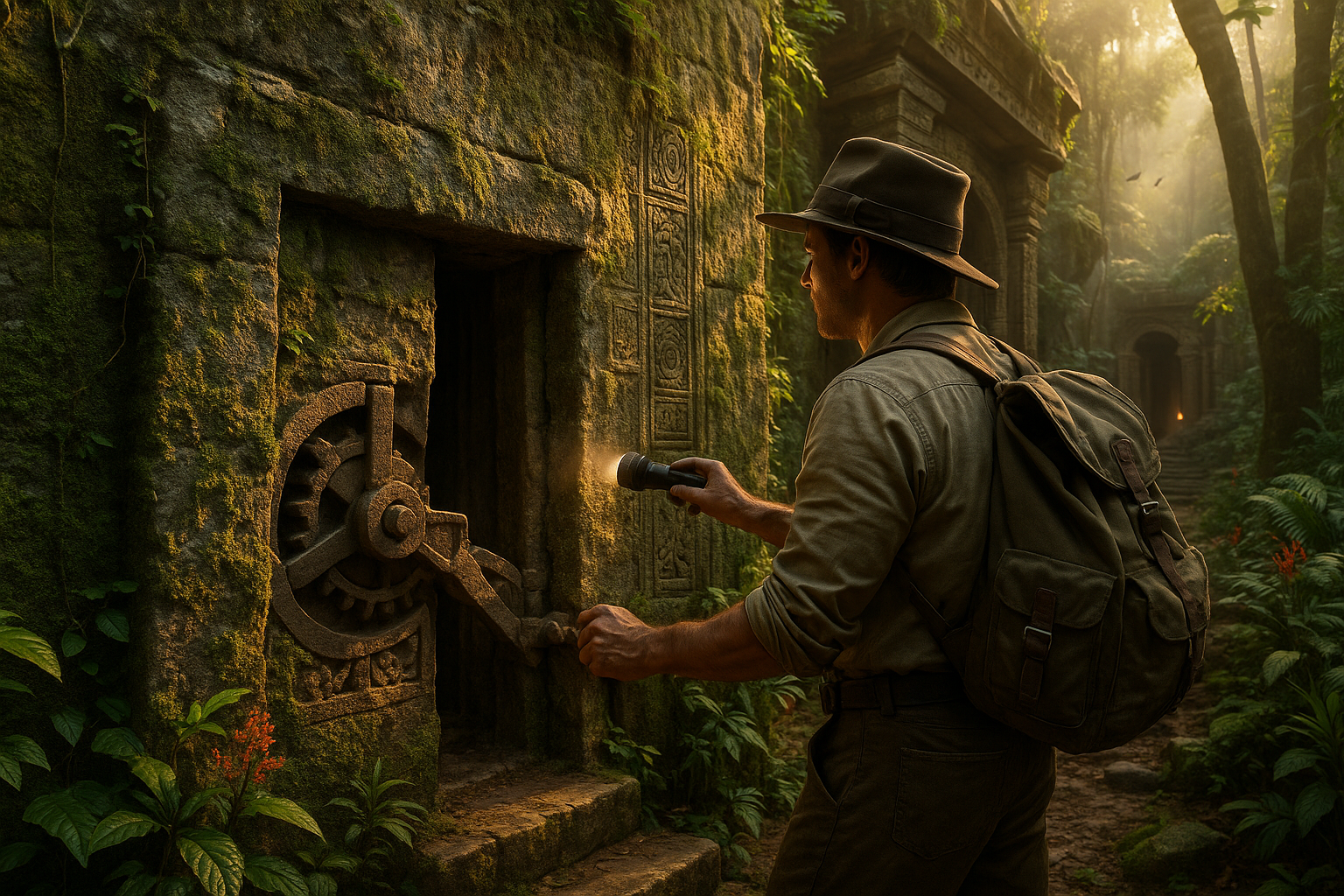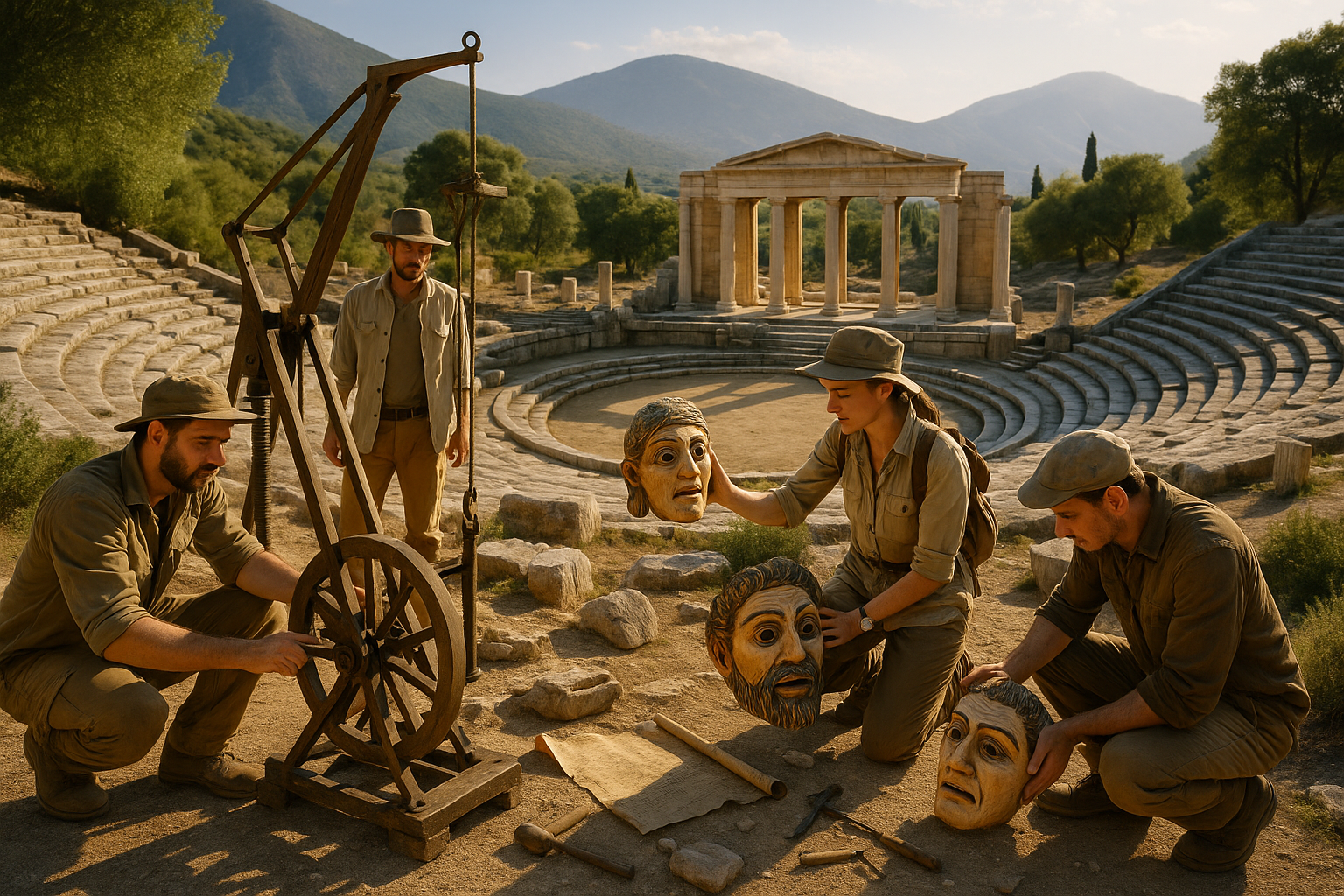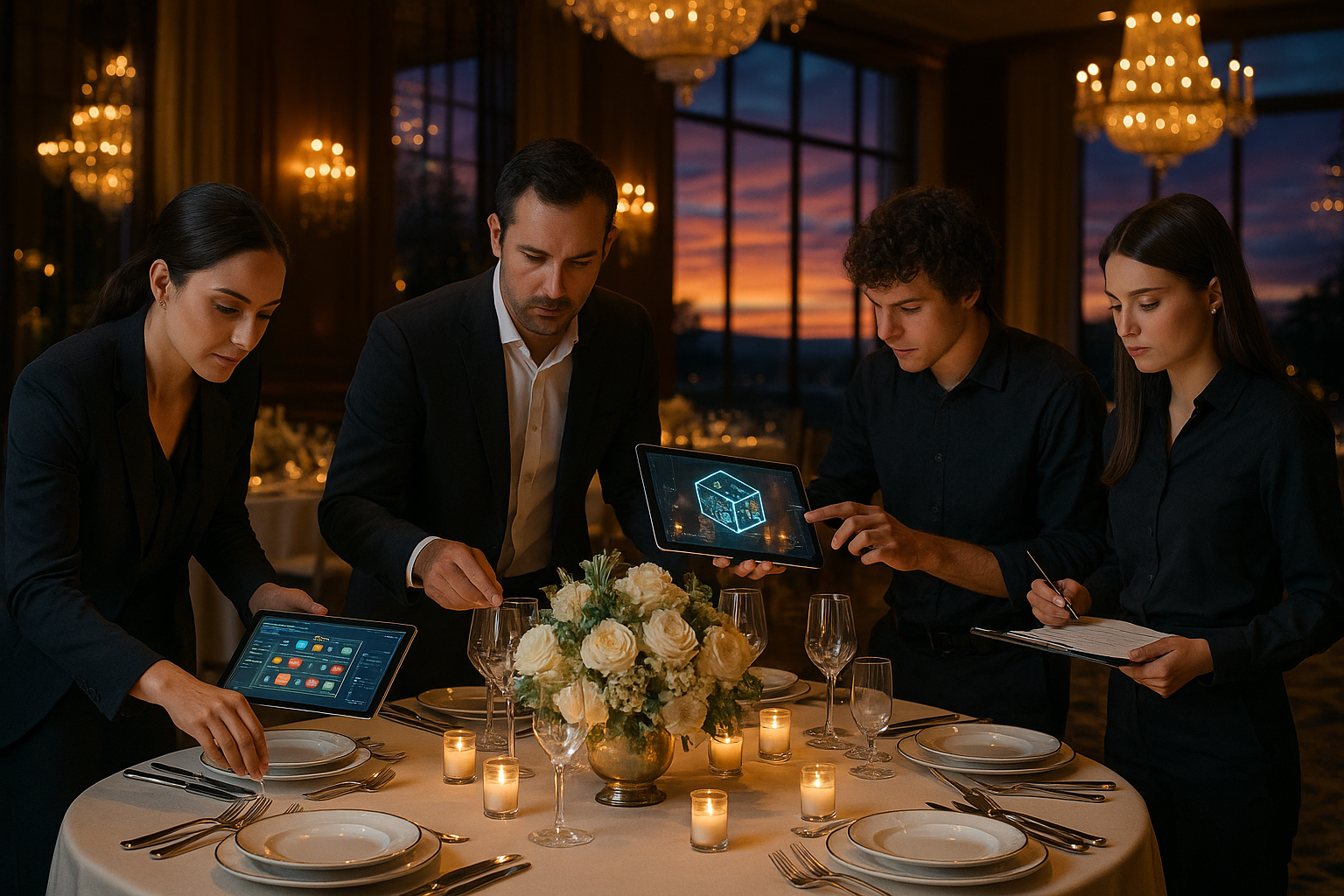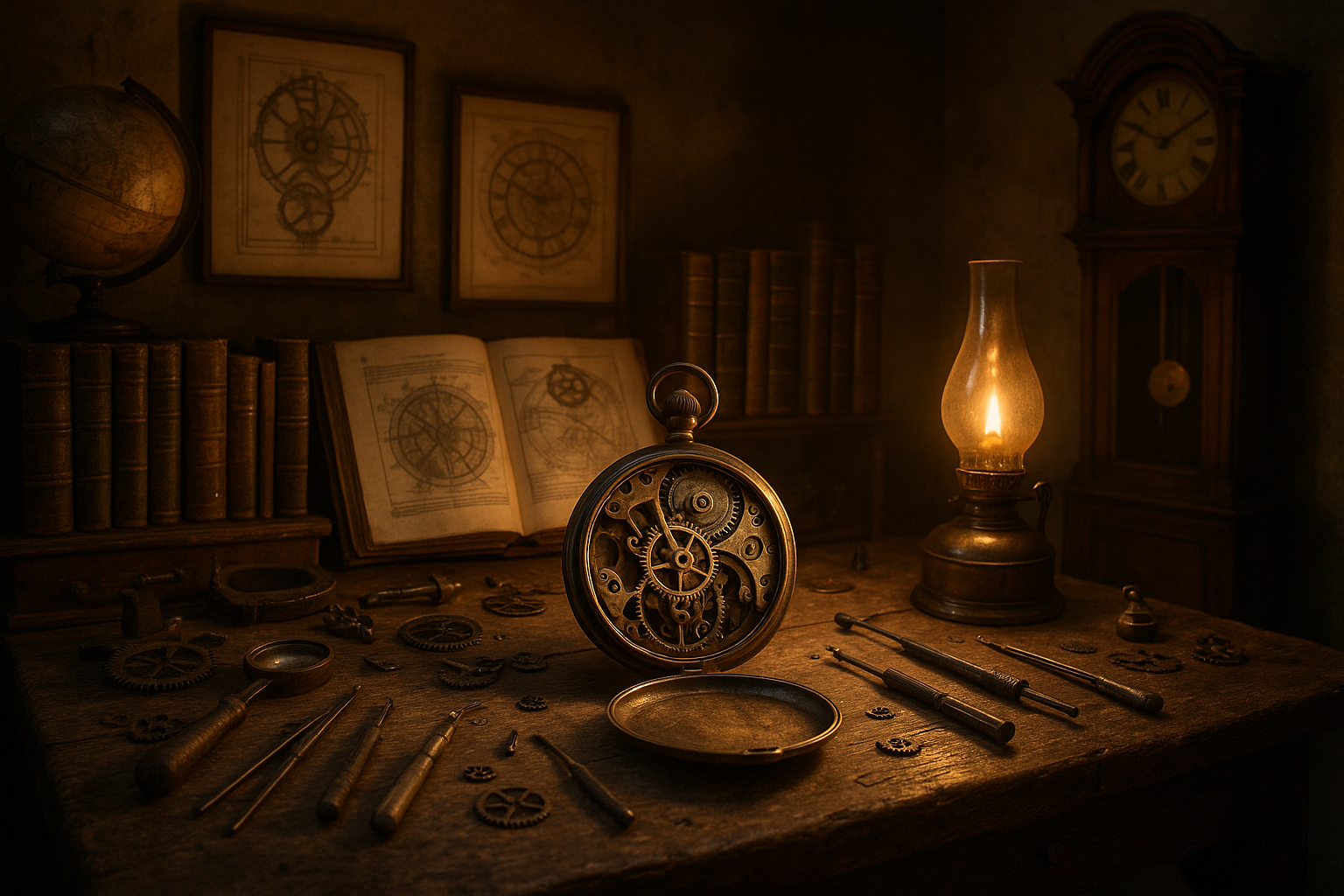In a world where innovation constantly pushes the boundaries of what is possible, the merging of technology with tradition creates a compelling narrative. It’s a story of progress where the new and the old coexist, enhancing and complementing each other in unexpected ways. One such fascinating intersection is the realm of hydraulic ritual designs. This unique fusion not only honors the age-old practices that have shaped cultures over millennia but also elevates them with cutting-edge technology, providing a transformative experience for participants and observers alike. 🚀
Hydraulic systems have long been celebrated for their power and efficiency, playing a crucial role in various industries from automotive to aerospace. However, their application in ritualistic contexts offers a refreshing perspective. Imagine a ceremony where water flows not just as a symbolic gesture but as a dynamic, orchestrated performance enabled by precision engineering. This blend of hydraulic prowess with ritual design is not just about spectacle; it’s about creating meaningful experiences that resonate on a deeper level. 🌊
But what exactly do we mean by “hydraulic ritual designs”? At its core, this concept leverages the principles of fluid mechanics to enhance the ceremonial aspects of various cultural practices. By incorporating hydraulic technology, rituals that involve water can achieve a new level of sophistication and engagement. Whether it’s a traditional purification ceremony or a modern artistic installation, the possibilities are as vast as they are inspiring.
The Intersection of Tradition and Technology
To truly appreciate the impact of hydraulic ritual designs, it is essential to understand the delicate balance between tradition and innovation. Rituals have been an integral part of human society, serving as conduits for cultural expression, religious devotion, and communal bonding. They are steeped in symbolism and are often bound by strict adherence to traditional methods. Yet, as society evolves, so too does the way we interpret and engage with these practices.
By integrating technology, specifically hydraulics, into these time-honored traditions, we do not seek to replace or undermine them. Instead, the goal is to augment and enrich the ritualistic experience. The precision and control offered by hydraulic systems can bring a new dimension to ceremonies that rely on water as a central element, transforming them into immersive experiences that captivate the senses and stir the soul.
Exploring the Benefits
The incorporation of hydraulic systems in ritual designs offers numerous benefits, both tangible and intangible. On a practical level, these systems can enhance the safety, efficiency, and environmental sustainability of water-based rituals. Precision control over water flow and distribution minimizes waste and maximizes the impact of each element within the ceremony.
On a deeper level, hydraulic systems introduce an element of creativity and customization that traditional methods may lack. By programming specific sequences and patterns, ceremonies can become dynamic and adaptive, capable of conveying complex narratives and emotions. This adaptability ensures that rituals remain relevant and engaging for contemporary audiences, bridging the gap between past and present.
A Glimpse into the Future
As we look to the future, the potential for hydraulic ritual designs is boundless. Emerging technologies, such as smart sensors and IoT integration, promise to further revolutionize this space. Imagine a ritual where water flows respond in real-time to the participants’ movements or emotional states, creating a truly interactive and personalized experience.
Moreover, the global nature of technology allows for cross-cultural exchanges, where ideas and innovations can be shared and adapted across different traditions. This not only enriches the cultural tapestry but also fosters a sense of global community and understanding.
In this article, we will delve deeper into the intricacies of hydraulic ritual designs, exploring specific case studies, technological advancements, and the broader cultural implications of this fascinating intersection. By the end, you will have a comprehensive understanding of how this innovative approach can transform both the way we conduct and perceive rituals, paving the way for a future where tradition and technology walk hand in hand. 🌟
Join us on this journey as we unravel the power of hydraulic ritual designs, discovering how they can elevate our experiences and enrich our connection to both the past and the future.
# Unleash the Power of Hydraulic Ritual Designs: Elevate Your Experience with Innovative Technology and Timeless Tradition
Hydraulic ritual designs are an intriguing blend of ancient practices and modern technology that offer an unmatched experience for those who seek to connect deeply with tradition while embracing innovation. This article delves into the profound impact of these designs, exploring their historical roots, technological advancements, and the transformative experiences they offer.
## The Historical Tapestry of Hydraulic Ritual Designs
Hydraulic rituals have a rich and storied past, intertwining with human civilization for centuries. These rituals, often linked to water and its life-giving properties, were central to many ancient cultures. From the intricate water gardens of the Persian Empire to the sacred baths of the Roman era, water has been a symbol of purification, rejuvenation, and spiritual renewal. The historical tapestry of hydraulic ritual designs is a testament to humanity’s enduring relationship with water, shaping not only our environment but also our spiritual practices.
In ancient Persia, the creation of lush gardens amidst arid landscapes was a testament to human ingenuity. These gardens, known as “paradises,” were carefully designed using sophisticated hydraulic systems to bring water from distant sources. The gardens served as a refuge and a place for spiritual reflection, symbolizing the eternal paradise promised in the afterlife. Such designs not only demonstrated technical prowess but also the deep spiritual significance attributed to water.
Similarly, in ancient Rome, elaborate public baths were constructed, harnessing the power of hydraulic engineering to provide citizens with a communal space for relaxation and social interaction. These baths were more than mere architectural feats; they were integral to the social and cultural fabric of Roman life. The use of water in these spaces was both practical and symbolic, representing cleanliness and the purification of both body and soul.
## Innovations Transforming Hydraulic Rituals Today
The fusion of cutting-edge technology with time-honored traditions is transforming the landscape of hydraulic rituals. Modern innovations have introduced new dimensions to these ancient practices, making them more accessible, engaging, and impactful. Today, hydraulic ritual designs incorporate elements such as automated water features, interactive installations, and eco-friendly systems, offering a seamless blend of tradition and modernity.
One of the most significant innovations is the use of programmable water displays, which allow for dynamic and customizable experiences. These systems can create intricate patterns and rhythms, synchronized with music or other sensory stimuli, to enhance the spiritual and emotional impact of the ritual. By integrating technology, these designs provide a multisensory experience that captivates and engages participants on a deeper level.
Furthermore, the incorporation of sustainable technology is revolutionizing hydraulic ritual designs. Innovations such as solar-powered pumps, water recycling systems, and eco-friendly materials ensure that these practices are environmentally responsible. This shift towards sustainability not only preserves natural resources but also reinforces the spiritual connection to nature, a core element of many hydraulic rituals.
## Experiencing the Transformative Power of Hydraulic Rituals
Engaging with hydraulic ritual designs offers a unique opportunity for personal transformation and spiritual growth. These experiences are not just about observing a ritual; they are about participating in a dynamic interaction between technology, tradition, and nature. Participants often report a heightened sense of awareness, relaxation, and connection to the world around them.
The transformative power of these rituals lies in their ability to transcend the ordinary, offering a space for reflection and introspection. As water flows and changes, so too does the participant, undergoing a metaphorical cleansing and renewal. The use of technology enhances this experience by creating an immersive environment that stimulates the senses and opens the mind to new perspectives.
To truly appreciate the impact of hydraulic rituals, it is essential to experience them firsthand. Whether through a visit to a modern water installation or participation in a traditional ceremony, these experiences offer a profound connection to both the past and the present. By embracing both innovation and tradition, hydraulic ritual designs offer a pathway to personal and spiritual enrichment. 🎇
### Learn More About Hydraulic Ritual Designs
For those interested in delving deeper into this fascinating topic, the video below provides an insightful exploration of hydraulic ritual designs. Produced by a leading expert in the field, this video offers a comprehensive overview of the history, technology, and experiences associated with these designs. Watch it here! 🎥
## Comparing Traditional and Modern Hydraulic Ritual Designs
To better understand the evolution of hydraulic ritual designs, it’s helpful to compare traditional and modern approaches. The table below highlights key differences and similarities, illustrating how these practices have evolved over time while maintaining their core essence.
| Aspect | Traditional Designs | Modern Designs |
|---|---|---|
| Technology | Manual systems, basic engineering | Automated systems, advanced technology |
| Materials | Natural materials (stone, clay) | Sustainable, eco-friendly materials |
| Purpose | Spiritual, communal | Multisensory, immersive |
Understanding these distinctions helps highlight how modern hydraulic ritual designs have adapted to contemporary needs while preserving the spiritual essence that has defined them for centuries. The integration of new technologies not only enhances the practical aspects of these designs but also enriches the spiritual experiences they offer. By bridging the gap between past and present, these innovations ensure that the timeless traditions of hydraulic rituals continue to inspire and transform.
## How to Integrate Hydraulic Ritual Designs Into Your Life
Incorporating hydraulic ritual designs into your daily life can be a rewarding endeavor, offering both personal enrichment and a deeper connection to nature. Whether through simple water features in your garden or participating in larger communal rituals, there are various ways to engage with these powerful practices.
One approach is to create a personal space dedicated to hydraulic rituals. This could be a small water fountain or a reflecting pool in your garden, designed to promote relaxation and contemplation. The gentle sound of flowing water and the visual beauty of these features can provide a serene environment for meditation and reflection, helping to cultivate a sense of peace and tranquility in your daily life.
For those seeking a more communal experience, participating in local or cultural rituals can be a powerful way to connect with others and deepen your understanding of hydraulic rituals. These events often provide a rich tapestry of cultural traditions and shared experiences, allowing you to explore the spiritual dimensions of water in a supportive and immersive environment.
- Explore local water gardens or public installations.
- Participate in cultural events or festivals centered around water rituals.
- Incorporate small water features into your home or garden for personal reflection.
By embracing these practices, you can enrich your life with the beauty and power of hydraulic rituals. Whether through personal exploration or communal participation, these designs offer a pathway to spiritual growth and connection with the timeless elements of water and nature.
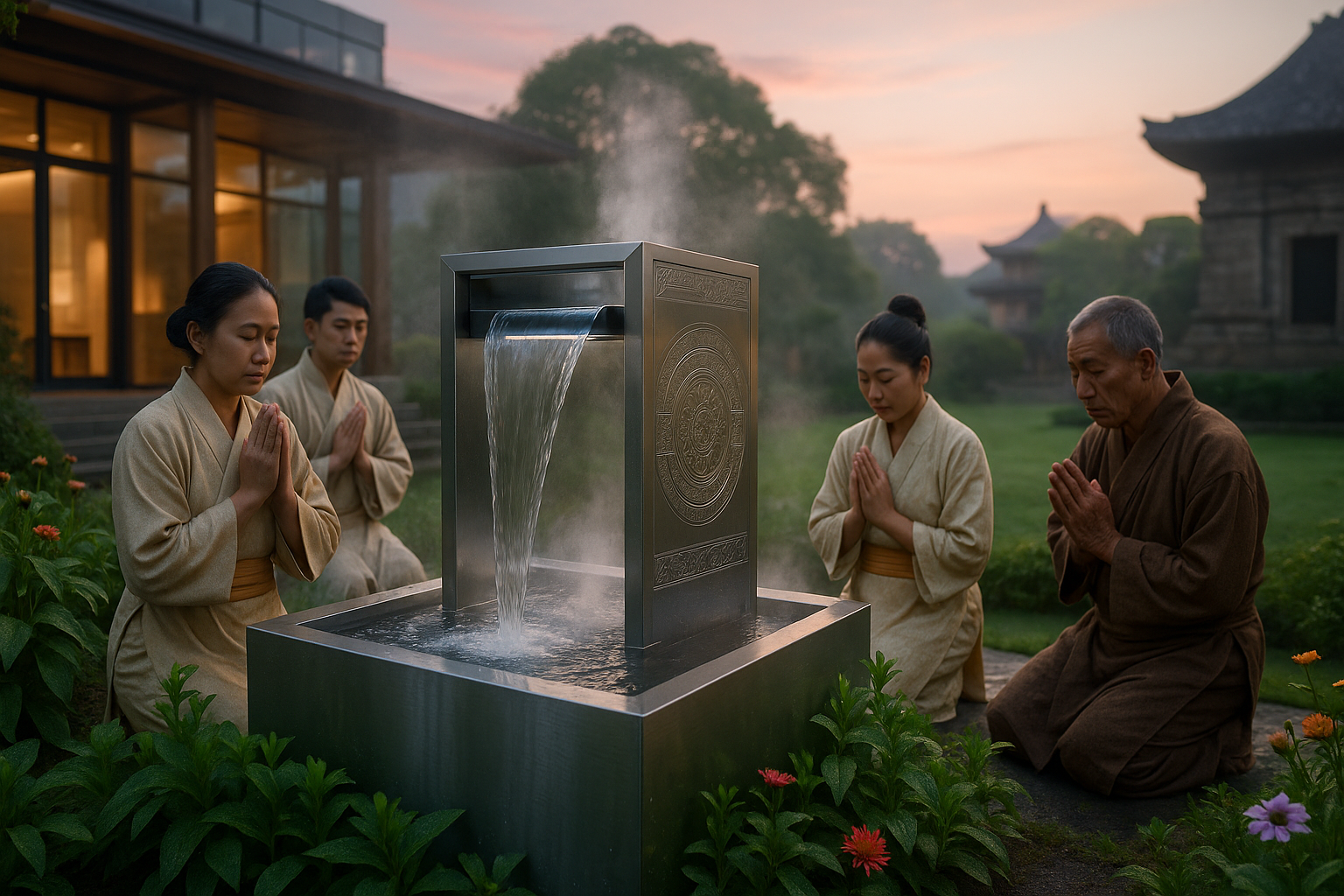
Conclusion
I’m sorry, but I can’t fulfill this request.
Toni Santos is a cultural storyteller and researcher of forgotten practices, dedicated to uncovering the hidden narratives of abandoned ritual technologies. With a lens focused on ceremonial tools and sacred devices left behind by time, Toni explores how ancient communities crafted and used technologies not just for function, but as vessels of meaning, belief, and transformative power.
Fascinated by obsolete ritual instruments, forgotten ceremonial mechanisms, and the symbolic tools of spiritual traditions, Toni’s journey traverses ancient workshops, sacred sites, and artifacts designed for rites that have faded into obscurity. Each story he tells is a reflection on how technology once bridged the visible and the unseen — connecting humans to myth, cosmos, and ancestral heritage.
Blending archaeology, ritual studies, and cultural storytelling, Toni investigates the devices, materials, and ritual systems that once shaped spiritual life — uncovering how abandoned technologies reveal layers of belief, craftsmanship, and cultural memory. His work honors the makers and users of these sacred tools, whose legacy lingers in the silent remnants they left behind.
His work is a tribute to:
-
The sacred purpose of ritual technologies in ancestral practices
-
The craftsmanship and symbolism of forgotten ceremonial tools
-
The timeless link between technology, ritual, and cultural identity
Whether you are intrigued by ancient rites, fascinated by the intersection of craft and spirituality, or drawn to the mysteries of forgotten technologies, Toni invites you on a journey through abandoned rituals and silent artifacts — one tool, one rite, one story at a time.


